2014 Lapierre Zesty AM 527
(discontinued)
| Where To Buy | |||
|---|---|---|---|
Free shipping on orders over $50 (continental U.S. only).
International shipping available. Some exclusions apply. |
|||
Free shipping on orders over $50 (continental U.S. only).
International shipping available. Some exclusions apply. |
|||
Free Delivery on purchases over £20.
|
|||
Reviewed by John Hauer and Jess Pedersen // Photos by Shawn Spomer and Lear Miller
Lapierre’s Zesty AM ticks many of the boxes for an aggressive all-mountain bike: it has great geometry, a good looking list of components, a carbon frameset, and 150mm of travel at a reasonable price. It also has an interesting “Electronic Intelligence” rear shock, known as the E:i system. “There’s no place for electronics in mountain biking,” some of you will say, while others may be open to new ideas and technology. With an open mind and nothing but miles of rough Sedona, Arizona trails in front of us during the annual Vital MTB Test Sessions, we set out to see if Lapierre’s mid-level all-mountain bike is the future machine it’s claimed to be.

Zesty AM 527 Highlights
- Carbon monocoque frame with alloy chainstays
- 27.5-inch (650b) wheels
- 5.9-inches (150mm) of rear wheel travel
- OST+ suspension with e:i shock
- Tapered headtube
- 67-degree head angle
- 74-degree seat tube angle
- 0.5-inch (12mm) bottom bracket drop
- 16.9-inch (430mm) chainstays
- Press-fit bottom bracket with ISCG mounts
- 12x142mm rear axle
- Measured weight (size Large, no pedals): 30 pounds, 1 ounce (13.6kg)
- $5,000 MSRP
The Zesty AM uses Lapierre’s OST+ (Optimized Suspension Technology) suspension design, a virtual pivot point system. Originally launched in 2008 with the help of Nicolas Vouilloz, the OST system is said to eliminate pedal bob while remaining fully active over bumps. How? Lapierre says “any force created by pedal feedback is countered by pedaling: the tension created in the chain by a pedal stroke brings the swing arm back to its equilibrium point.” The design uses a Horst-Link, something Specialized previously held exclusive privileges to in the USA. That has now changed, and several Lapierre models are available in the States.

What makes this bike really interesting is the E:i equipped Rockshox Monarch RT3 rear shock. E:i was co-developed with RockShox over a 5-year period, and is capable of adjusting the rear suspension from fully locked to fully open in a period of just 0.1 seconds. The fully automatic system continuously monitors inputs from an accelerometer on the fork, an accelerometer on the stem, and a cadence sensor in the crank spindle to determine if the shock should be open, locked, or in a platform mode. By calculating the difference between the two accelerometer inputs, the system is able to determine if the front wheel is hitting bumps or not and change the rear suspension to best suit the situation. Whether you’re pedaling or not is also taken into account.
In Auto mode, the E:i shock will adjust to one of four settings:
- Pedaling + no hits = blocked (locked)
- Pedaling + light hits = platform (medium)
- Pedaling + big hits = open
- No pedaling = open

The end result is a suspension system that changes a maximum of 20 to 30 times per minute in an effort to more perfectly match the demands of the terrain - more than a rider could do manually. A display unit above the stem shows what mode you’re in, the battery level, and allows you to manually override the system if you’d like. There are five sensitivity settings in the Auto mode, allowing you to tell the system how big of a bump you’d like to hit before it opens up.
A battery pack for the E:i system is mounted inside the front triangle, unfortunately nudging out any room for a water bottle. As you might have guessed, a charger is required, though it’s not needed very often. You will also notice the extra cables that run from the bar mounted computer controlling the system to both the fork a rear shock, which are a bit of rats nest. A removable sag indicator helps ease the setup process.

The carbon monocoque front triangle has internal cable and seatpost routing, a tapered headtube, press fit bottom bracket, ISCG mounts, and an integrated down tube protector. The rear end of the Zesty AM is very stout with a 12x142mm axle, very wide aluminum chainstays, and bulky carbon seat stays. There’s also a carbon guard designed to protect the derailleur. Mud clearance is great with ~2cm of room for goop with the stock 2.25-inch Schwalbe tire.
Lapierre’s Zesty AM lineup includes a total of five models (327, 427, 527, 727, and 927) ranging from $2,900 to $8,000. Our test bike was the mid-range Zesty AM 527 which slots in at $5,000.
On The Trail
Surprisingly, the Zesty AM came with a super long 90mm stem, which is odd given the bike’s intentions, aggressive geometry, and already long reach dimension. Wanting to see what the bike was truly capable of without fearing for our lives, we swapped the stem for something in the 50mm range and also took the opportunity to sub in something slightly wider than the average width stock 29-inch (740mm) bars. With these quick changes in place we felt right at home. The 17.6-inch (447mm) reach on the Zesty AM is nice and long with an average length 24.6-inch (625mm) Large top tube. We set the E:i system to “Auto 2” mode and hit the trails.
Our time on the Zesty AM was spent on several of Sedona’s best rides, encompassing everything from technical, exposed singletrack to a slalom-like jump trail and fast slickrock with repeat big hits. Trails included Slim Shady, HiLine, HT, Little Horse, the Hogs, Pig Tail, Teacup, Ridge, and Brewer.
The bike’s geometry proved to be very balanced, and we immediately felt right at home. With the short stem in place we wouldn’t have chosen to change anything geometry related. The 16.9-inch (430mm) chainstays, decently low bottom bracket, and 67-degree head angle make for a bike that never has an issue getting around the tighter sections of trail, but is sufficiently stable at speed.
You can tell that the bike was designed with a focus on going down the hill and to go down it fast. With its balanced geometry and 150mm of front and rear suspension it’s very capable even on the most technical portions of trail. Changing lines and popping from one area to another was a breeze despite not being the lightest bike in its class. The extra mass did help stabilize things a bit when it got rough, and the built in efficiency of the electronic suspension would allow you to get up and go when the trail flattened out. We didn’t notice any poor characteristics that held us back on the descents.

The E:i RockShox Monarch RT3 rear shock was a major highlight. With the system in “Auto 2” mode the bike transitioned from the different sections of trail without any thought. It was a very unique experience to blast through a rough downhill section and be able to get right on the gas with the bike feeling virtually locked out. We could see this system being a great asset to have while Enduro racing or dropping your buddies on the trail while they reach down to switch their suspension levers. When the shock was open it still had a nice, progressive feel and an spring curve which made the bike absorb small bumps well while ramping up to give you that playful feel. It could have been a little more supple for square edge hits, but ultimately the bike handled well.
We did have some minor issues riding the bike with the Auto suspension setting on, however. When you come off a smooth section of trail at speed and hit a square edge bump, the system does not react quickly enough to open up. The entire process takes 0.1 seconds from the time the sensors register bump movement and cadence to the adjustment of the rear shock. Considering the distance between the front and rear wheel, this equates to a maximum speed of 22mph (35.4kph). That means the first impact can sometimes feel extremely harsh. This was not so much an issue while descending, because the shock is often open then, but Sedona has a lot of trail sections that go from flat to steep, punchy, rocky climbs. When you would excel to get up these climbs and hit the first impact, the back would not absorb the energy, instead sending it right on up into the rider. This would cause us to shift our weight to absorb the first impact, leaving us in an awkward position to continue climbing up the punchy section, sometimes struggling to keep traction with the rear wheel. By the end of a long ride we were manually switching to Open mode for climbing up these bits of trail so we didn’t have to use as much energy battling for traction. We thought the Zesty climbed great even when the rear shock was Open.
For descents and rolling bits of trail we thought the E:i system worked excellently, however, wiping out our initial skepticism. It was constantly switching between open and locked throughout the ride. Start pedaling and half a pedal stroke later it's locked. If you’re riding on a smooth trail and stop pedaling, a moment later the shock opens. If you are pedaling over rough or pedaling and stop as you hit the rough, the shock instantly opens up. After listening to it for the first few miles making sure it was doing what it was supposed to, we were able to forget about it and just concentrate on our ride. We didn’t mind the noise, which sounded like a space ship was preparing to take off or as though you pulled up to the scene in your low rider and let the pressure out of the air bags.
Sprinting with the shock locked-out or in the platform mode felt great - even more so when we didn’t have to do anything to make it that way. You get to a section of trail where you need to stand up and sprint and the shock makes sure your energy and power is going to the ground and not the suspension.

Despite having a carbon frame, at 30.06 pounds (13.6kg) the Zesty AM 527 definitely has some mass to it. However, the extra mass does add stability on the descents, and the suspension and geometry make the bike feel snappy and easy to move around when needed. With the electronic suspension adjust and some fast rolling tires this bike has no problem getting up to speed and maintaining it.
Looking the bike over before we began riding, we immediately had major concerns about riding a 32mm FOX CTD Evolution fork with 150mm of travel. FOX doesn’t make the 32 available in anything longer than 140mm for aftermarket sale, likely for a reason. Even so, we were surprised that it wasn’t a complete noodle, nor did it lead to any sketchy situations. The trails in Sedona may not be super fast, but they’re rocky as can be with lots of direction changes for your front end to get held up on. If you're a heavier rider or in terrain where the speeds increase and the impacts get harsher, you may want to opt for a 34mm or larger fork chassis. Performance wise, the fork was very supple off the top and never felt sticky. We rode it in “Trail” mode for the majority of the ride because the “Descend” setting felt under-damped.
We had a big issue with the extra wide rear chainstay and seat stay, which stuck out tremendously and caught our heels as we’d pedal, especially when exhausted at the end of a big ride. Lapierre is aware of this issue, however, and has narrowed the chainstays by 15mm (7.5mm on each side) which should help.
While it may look a little gimmicky, a feature we thought was great was the carbon derailleur guard. On the rockiest, most technical descent we rode we heard it tag and scrape against rocks a handful of times. Those moments could have easily bent or destroyed the rear derailleur. With how expensive derailleurs and hangers are, we’ll take all the extra drivetrain protection we can get.
Build Kit
Our mid-range Zesty AM 527 came equipped with components from FOX, FSA, Easton, Formula, Shimano, SRAM, Race Face, Schwalbe, SDG, and KS.

The 2.25-inch Schwalbe Nobby Nic tires were average at best. Though they rolled very quickly and helped to shave a bit of weight, the thin sidewall and lack of any meaty knobs were causes for concern when the trail was rough or loose. During our first ride we actually tore a large hole in the rear tire casing.
Stiffness wise the Race Face wheels were adequate. It can be a downer when a manufacturer puts flimsy wheels on a stout frame, but this was not the case with the Zesty. They did seem to be a bit heavy, though, which slowed down the bike’s ability to accelerate a tad, but the engagement and strength was on point with wheels that retail for much more money. The wheels held up to well to some decent abuse on sandstone drops, gaps, steep roll-ins, and high speed rock gardens.
While we’ve professed our love for the externally routed KS Lev seatpost in the past, the newer Lev Integra model took far too much effort to set up. It was a careful balancing act to find the perfect cable tension to keep the post from dropping unexpectedly. Luckily KS is already aware of the issue and has released a new retrofittable actuator with zero cable movement. All new bikes and distributor stock have moved to the new design, but there may be a few stragglers still out there, so be aware that you may need to send the post to KS for the fix.
The Formula RX brakes were also a pleasant surprise. They had a decent lever feel, plenty of modulation, and a ton of bite when we really needed them - something we've had issues with on Formula brakes in the past. 180mm rotors front and rear helped to improve braking control. We didn’t ride any extended descents with heavy braking, but our experience was very positive. Note that recent spec lists for the Zesty AM 527 show a switch to Avid Elixir 9 disc brakes, which we’ve gotten along well with in other tests.
We had zero issues with the 2x10 Shimano XT drivetrain. Despite the rough terrain there were no chain drops and it was relatively quiet. You’ll need to spring for the more expensive 727 or 927 models if you want a 1x11 drivetrain, which would help reduce the bike’s overall weight a bit.
Long Term Durability
The frame showed no durability concerns, and we’re pretty confident that it’d hold up to many years of use. We do have to wonder about the internals of the shock, however. On a normal shock, most riders flip the lockout/compression lever a handful of times per ride. With the E:i system the shock sees likely 100X that amount. Could this cause parts to wear quicker inside the shock? It’s possible.
Additionally, 32mm FOX Float forks are notorious for developing a creaky crown/steerer unit. The ability to ride the Zesty AM extremely hard can’t be good for that tiny stanchion tube junction.

What's The Bottom Line?
If it’s good enough for Nico Vouilloz, then it’s good enough for you. The Lapierre Zesty AM 527 was designed with a purpose - it’s efficient, fast, and shreds any gnarly terrain you come across. Chances are good that we’ll see some improvements to the electronic suspension system over the next few years, but even as is it’s an incredibly useful and effective feature to have. It's very exciting stuff and definitely has a place in mountain biking.
Riders looking for a good value will be happy with the 527. The bike is so efficient up and down hills that it fits a rider range of use than most 150mm travel trail bikes.
Visit www.lapierrebicycles.com for more details.
Bonus Gallery: 28 photos of the 2014 Lapierre Zesty AM 527 up close and in action
About The Reviewers
John Hauer - In 13 years of riding, John has done it all and done it well. Downhill, 4X, Enduro, XC, cyclocross... you name it. He spent 7 years as the head test rider for a major suspension company, averages 15-20 hours of saddle time per week, and is extremely picky when it comes to a bike's performance. And yeah, he freakin’ loves Strava.
Jess Pedersen - Jess is one of those guys that can hop on a bike after a snowy winter and instantly kill it. He's deceptively quick, smooth, and always has good style. He's also known to tinker with bikes 'til they're perfect, creating custom additions and fixes along the way. Maybe it's that engineering background...

Specifications
| Where To Buy | |||
|---|---|---|---|
Free shipping on orders over $50 (continental U.S. only).
International shipping available. Some exclusions apply. |
|||
Free shipping on orders over $50 (continental U.S. only).
International shipping available. Some exclusions apply. |
|||
Free Delivery on purchases over £20.
|
|||







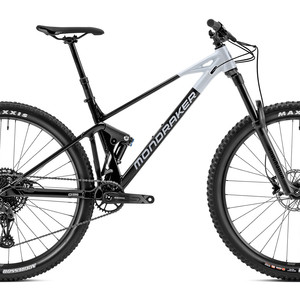
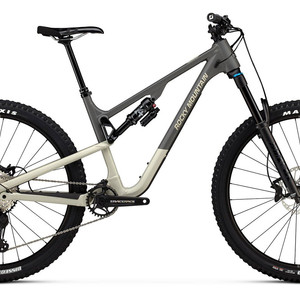
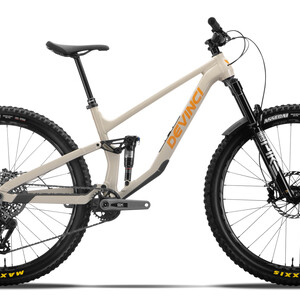

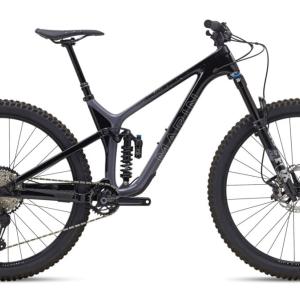

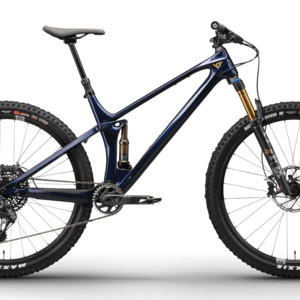
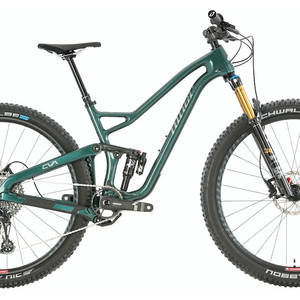






0 comments
Post a reply to: 2014 Test Sessions: Lapierre Zesty AM 527